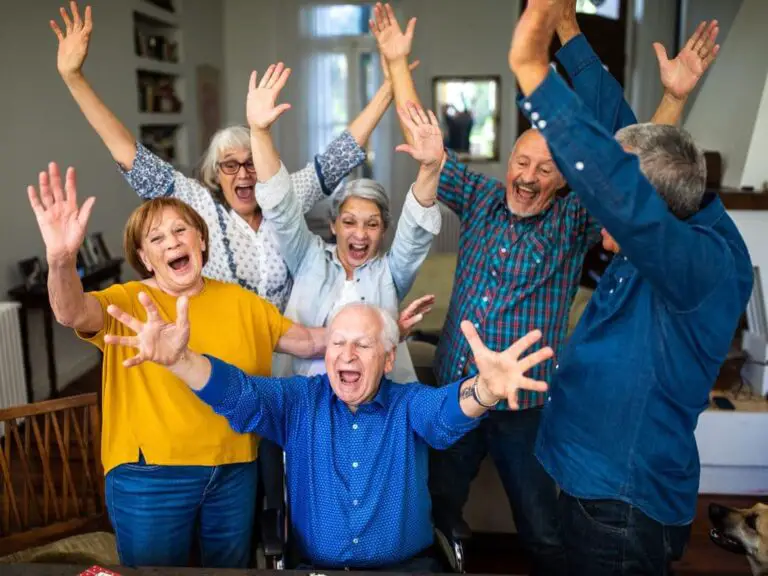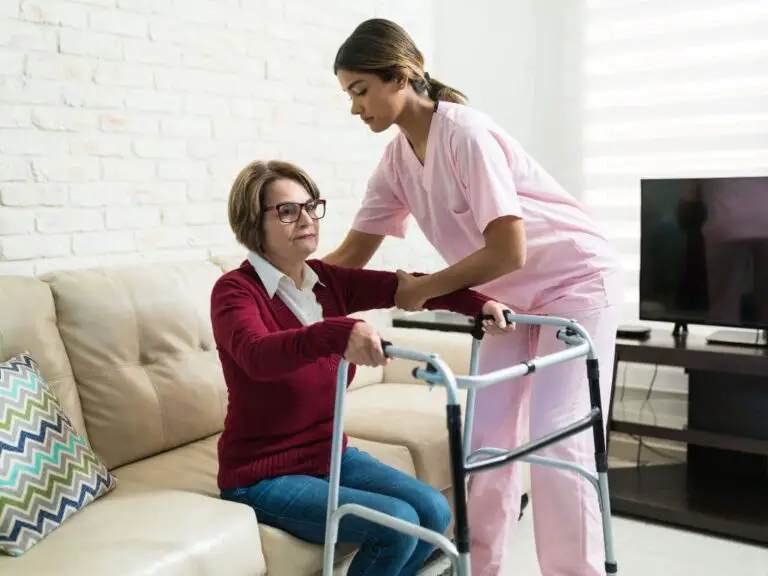Who Owns American House Senior Living?
American House Senior Living is a privately held company that was founded in 1979 with the vision to provide high-quality housing for seniors at an affordable price. This vision of excellence has endured for more than 40 years and expanded to serve residents at a number of senior housing communities. The company’s mission statement, “Living Well is Being Well,” drives everything they do.
American House Senior Living Communities is a privately held company, owned and operated by Dale Watchowski, who serves as the President and CEO. The company is the 27th largest senior living owner/operator in the country and operates under REDICO, a full-service commercial real estate enterprise also led by Watchowski.

Who are the Current Owners of American House Senior Living?
The current owners of American House Senior Living are Bob Gillette and Dale Watchowski. They have grown the company to more than 54 communities with an additional nine in various stages of development. The company has an extensive presence in Michigan, extending throughout the Midwest, New England, and Florida.
How did Bob Gillette and Dale Watchowski Come to Own American House Senior Living?
Bob Gillette and Dale Watchowski came to own American House Senior Living through their dedication to providing high-quality care for seniors. Their commitment to compassionate care provided by passionate people is evident in their leadership roles within the company. Dale Watchowski serves as President and CEO of both American House and REDICO, a full-service commercial real estate enterprise.
What Role Does REDICO Play in the Ownership and Management of American House Senior Living?
REDICO plays a significant role in the ownership and management of American House Senior Living. The team at REDICO brings sophisticated and innovative design options to senior housing through their development expertise. They think of every detail, striving to create the best environment for seniors to thrive in.
What are the Different Types of Senior Housing Services Provided by American House Senior Living?
American House Senior Living provides a range of senior housing services designed to cater to the varying needs and lifestyles of seniors. These include:
Independent Living: This service is ideal for seniors who wish to maintain their independence while enjoying a maintenance-free lifestyle. The Independent Living communities offer private apartments, chef-prepared meals, weekly housekeeping, transportation, and an array of activities.
Assisted Living: Assisted living services are provided for seniors who require some level of assistance with daily activities such as meals, laundry, medication reminders, and physical therapy. Residents live in private apartments within vibrant communities filled with activities and friends.
Memory Care: This service is specifically designed for residents suffering from dementia or Alzheimer’s disease. The Memory Care program emphasizes individualized care to help residents navigate the complexities of these conditions with compassion and respect.
Respite Care: Respite care offers temporary accommodation for seniors recovering from a hospital stay or undergoing an unexpected transition. It provides daily housekeeping, meals, and other necessary support to help guests focus on recovery and well-being.
Coordination of Hospice Care: In partnership with Hospice Care providers, American House Senior Living offers palliative services within their communities for terminally ill residents. This service aims to provide comfort and quality treatment in familiar surroundings while also offering support for family members.
All these services are made available by independent third-party home care companies in collaboration with American House Senior Living.
How Does American House Senior Living Provide Quality Care for its Residents?
American House Senior Living provides quality care for its residents through a variety of living options and services tailored to meet individual needs. These include Independent Living, Assisted Living, Memory Care, Respite Care, and the coordination of Hospice Care.
In their Independent Living communities, residents are offered private apartments designed around their personal preferences. The aim is to provide a vibrant, maintenance-free lifestyle that promotes rich friendships and engaging activities. Amenities such as culinary-inspired meals prepared by chefs, weekly housekeeping services, and transportation are also provided.
Assisted Living at American House offers a balance between independence and assistance. Residents live in private apartments but have access to help with meals, laundry, medication reminders, physical therapy, and daily activities when needed.
The Memory Care service at American House is designed with an emphasis on individualized care for residents dealing with dementia. This specialized program aims to create a culture of caring for residents while providing support for their loved ones navigating the complexities of the disease.
Respite Care is available for those who have experienced a hospital stay or unexpected transition. It offers temporary stays in well-appointed apartments where daily housekeeping and meals are taken care of by the devoted team at American House.
American House partners with Hospice Care providers to offer compassionate end-of-life care within their welcoming environment. This includes palliative services made available by independent third-party home care companies to ensure residents receive the best treatment in familiar surroundings.
Overall, American House Senior Living ensures quality care through personalized living options that promote independence while offering assistance when needed. Their focus on creating a supportive community environment further enhances the quality of life for its residents.
What are the Standards and Regulations for Senior Housing Facilities?
Senior housing facilities, including assisted living communities and nursing homes, are subject to various standards and regulations to ensure the safety and well-being of their residents. These regulations vary from state to state as there are no federal regulations for assisted living facilities.
Assisted Living Facilities: Assisted living communities or “residential care settings” are regulated by the state health department or social services office. The exact requirements vary by state but generally include resident agreements, admission and retention policies, support services and service plans, medication provisions, food service and dietary provisions, staffing requirements, apartment sizes and roommate rules, inspection and monitoring requirements, and remedies for non-compliant facilities. Assisted living facilities must obtain a license for operation from the state before they can start operating.
Nursing Homes: Nursing homes are regulated at both the federal and state levels. The Centers for Medicare & Medicaid Services (CMS) is a federal agency that rates nursing homes based on health inspections, staffing ratios, quality measures among other factors. State health departments also conduct regular inspections of nursing homes.
Continuous Medical Care Threshold: Most states do not allow assisted living communities to provide 24-hour nursing care. If a senior needs that level of care, they would be better suited in a skilled nursing facility or memory care unit.
Leisure Activities Requirement: Some states require residents in assisted living facilities to meet certain criteria regarding exercise levels before they may be admitted into the home.
Transparency: Providers need a license and certification from the appropriate state agency that conducts yearly audits and inspections to examine whether an assisted living facility is meeting the standard set by the state.
Costs: All assisted living facilities must provide a disclosure outlining fees or payment requirements in writing to the resident or their representatives in advance.
Medicaid: Whether a person in assisted living will receive Medicaid benefits depends on their financial situation and care needs. Many facilities accept Medicaid payments directly while some get payment through a waiver program or Supplemental Security Income (SSI).
Spousal Protection: Spousal impoverishment is a federal law that ensures a healthy spouse can protect some of their assets instead of spending it all for the other spouse’s long-term care costs.
Despite these regulations, there are limitations such as unpreparedness for unusual circumstances (e.g., COVID19 pandemic), sampling error during inspections which may not show the whole picture of conditions at the facility; inconsistency as inspections are usually done annually; lengthy procedure if violations are identified; human error during inspections.
How Does American House Ensure Compliance with these Standards and Regulations?
American house ensures compliance with these standards through rigorous internal audits along with regular inspections from external regulatory bodies.
How Can Families Choose the Right Senior Housing Option?
Here are some tips for families to choose the right senior housing option:
- Assess your loved one’s needs. Consider their physical health, mobility, and level of independence. This will help determine if independent living, assisted living, memory care, or nursing home is most appropriate.
- Take a tour. Visit facilities in person to get a feel for the environment and services offered. Notice the cleanliness, staff attentiveness, activities, and general mood of residents.
- Ask about care services. What medical, personal care, and supervision is available? Is there staff on-site 24/7? Are there different levels of care they can transition through if needs change?
- Consider location. Look for a facility near family and friends to make visiting easier. Proximity to health services, shopping, and entertainment is also ideal for an active lifestyle.
- Compare costs. Factor in monthly fees, what’s included (meals, activities, etc.), and potential add-ons like medication management or transportation. Be sure to understand all costs.
- Look for specialized options. If your loved one has specific medical needs like dementia or mobility issues, seek a community that caters to those.
- Evaluate safety features. Look for security, call buttons in rooms, handrails, medication management, and 24-hour staff.
- Consider amenities. What’s the setting like? Are there social activities, exercise classes, games, outdoor space? What about dining options and transportation services?
The right fit will provide the living assistance they need while offering an environment they enjoy. Take time to research all options thoroughly.
What are Challenges & Trends in The Senior Living Industry?
The senior living industry faces some key challenges and trends:
Challenges:
- Staffing Shortages – There is high demand for caregivers and assisted living staff, leading to turnover and lack of qualified applicants. This increases costs for facilities.
- Affordability – The costs of senior care are climbing, making it unaffordable for many seniors. Facilities must balance providing care with keeping costs reasonable.
- Capacity – As the senior population grows, demand is outpacing supply. Many facilities have long waitlists. More capacity is needed in this space.
- Regulation – The industry is highly regulated, and staying compliant with changing rules requires significant resources. This adds to operational costs.
Trends:
- A Focus on Amenities – Many facilities now offer upscale dining, fitness centers, salons, and entertainment to attract seniors. Competition is driving amenity upgrades.
- Technology Advancements – Technology like safety monitoring, electronic records, and engagement tools (virtual reality, robots, etc.) are being integrated to improve care and quality of life.
- Home Healthcare Partnerships – Many facilities are partnering with home health agencies for on-demand nursing, therapy, and assistance to keep residents independent longer.
- Specialized Memory Care – Due to rising rates of dementia, purpose-built dementia care communities tailored to this population are a big trend.
- More Mixed-Generations – Some senior communities are integrating limited younger residents to create more diversity and family-like atmospheres.
Frequently Asked Questions
-
Who owns American House Senior?
Bob Gillette, founder of American House who is now retired but remains on the board according to Watchowski. He brought thirteen communities to this joint venture. The portfolio grew to 63 communities, with nearly 7,000 units.
-
What is the most common living arrangement for older adults?
According to Pew Research Center’s recent study, the most popular type of family arrangement for seniors is living with extended relatives.
-
Does America have care homes?
Some homes can only provide personal care, such as help dressing, washing and medication giving. Some care homes also offer nursing services, with a 24-hour nurse available. Except for a handful of exceptions, housing in a care home can’t be rented or bought like retirement housing.
-
How many older adults were living in their own homes in the 1960s?
22% of men aged 18 to 34 live at home, compared with 10.9% in 1960. In 1960, 20 percent of older Americans lived alone and 40 percent of those over 75 were with their family. Only 6% and 19%, respectively, of over-75s live with their families in 2020.
-
How does an old age home work?
One situation is that elders live with their children, which provides financial and health safety. Another situation is where they are living alone with their children in separate houses. This takes into account the proximity of places of employment and the children’s educational needs.
-
What is the cheapest state for assisted living?
A Place For Mom’s Cost of Senior Care Survey found that eight states are the most affordable for assisted living. These were ranked in alphabetical order by the cost of an apartment with one bedroom.
-
What religion is National Church Residences?
National Church Residences was established on the Christian belief that older people should have access to affordable housing and socialization. We have been providing excellence for seniors and their families for nearly 60 years.
-
Who owns the American house?
American House has resized its portfolio this year by selling 13 properties. This was after the acquisition of 50% equity in the other shareholders. These were American House founder Bob Gillette, his son Robert Gillette, and Joe Schwartz who previously served as chief financial officer and chief investment officer.
-
Where do most senior citizens live in the US?
The United States has the largest number of senior citizens with 5,148,448 people 65 years and over. This is probably because California has the largest population of all the states. Florida is second with 3,926,889 senior citizens.
-
What percentage of the US population ends up in a nursing home?
A nursing home is where 5% (65+) of the older population lives. About 50% of these residents live in nursing homes. 35% of them are 75-84 years old, while 25% are 65-74 years.
-
How many locations does national church residences have?
You or your loved ones can have the lifestyle they desire. National Church Residences has 310 communities across 25 states. Locate a senior living facility near you.
-
What state has the most assisted living?
According to the Centers for Disease Control and Prevention data, Washington and Oregon have some of the highest residential care usage rates in the country.
-
How many senior living centers are there in the US?
There are nearly 28900 assisted living facilities in America today with almost 1,000,000 licensed beds.
-
What are the types of old age homes?
In India, there are two kinds of old age homes. The “Free” Old Age Home cares for elderly people without a family member. These people receive shelter, food and medical care. There is also a “Paid” type of home that provides care for an additional fee.
-
Where do most 90 year olds live?
The majority of those aged 90 or older live in a single or nursing home and have at least one mental or physical disability. Long-term trends indicate that women are living longer than men in their 90s. However, they have higher rates for widowhood, poverty and disability than their counterparts in the eighties.







